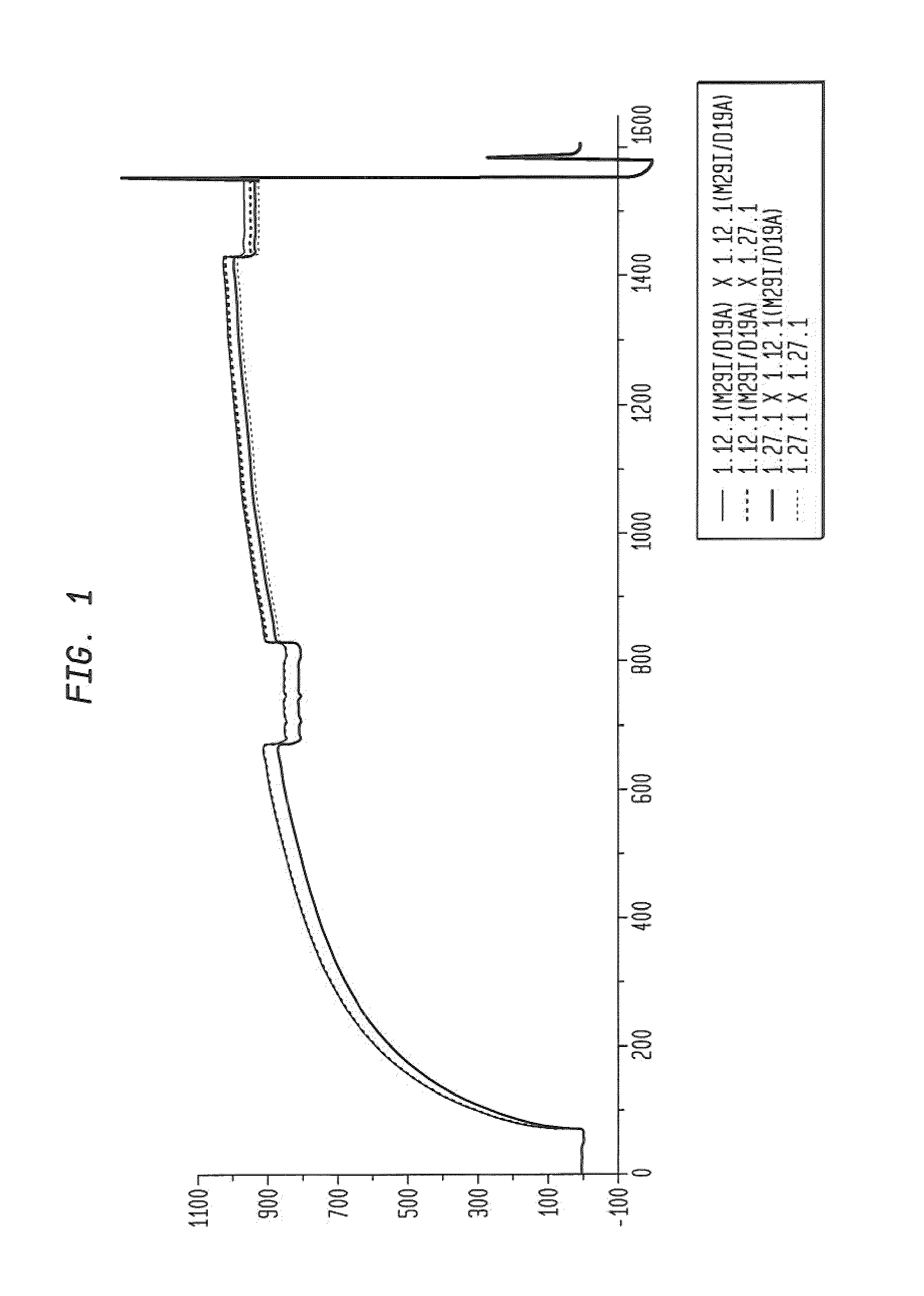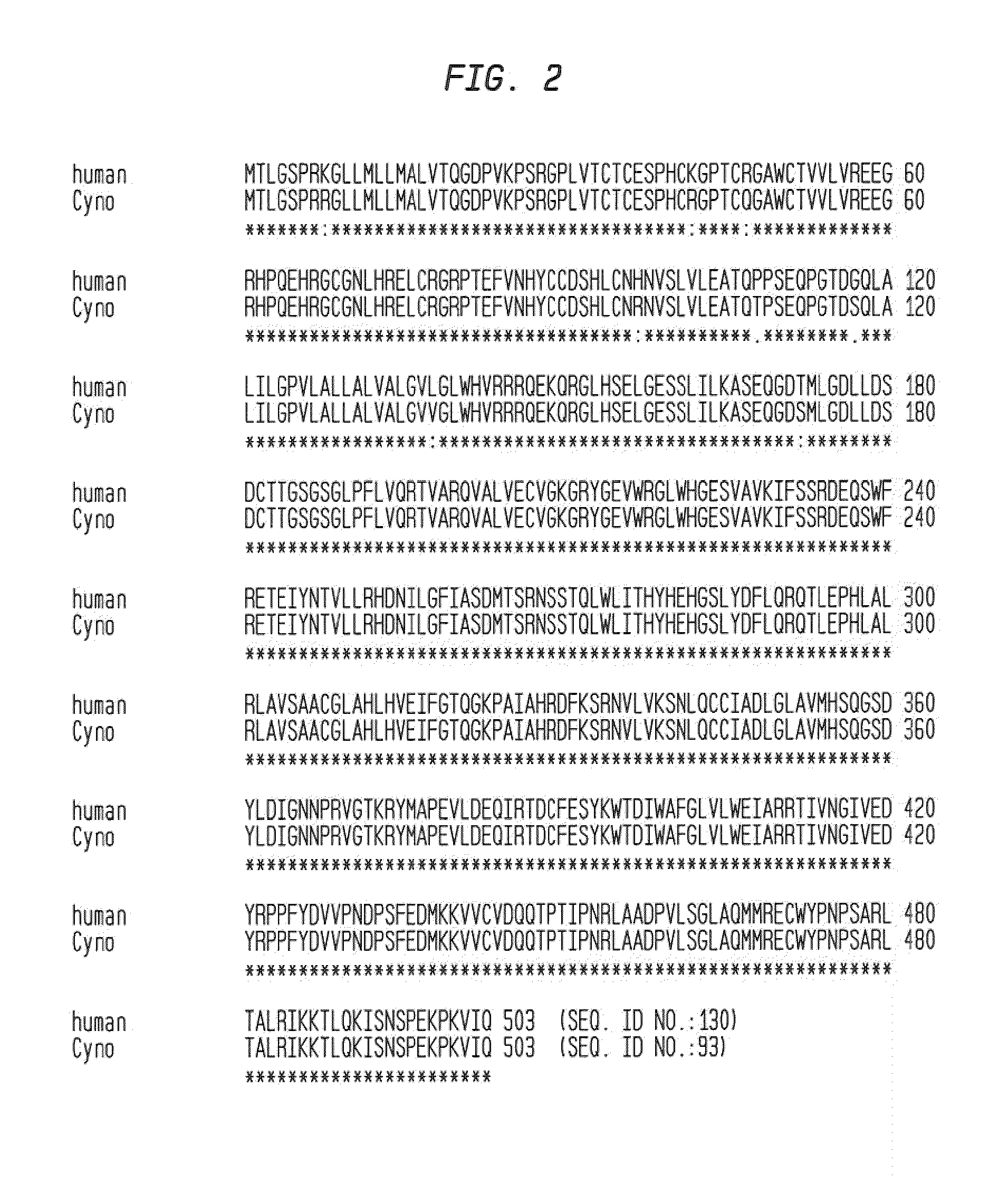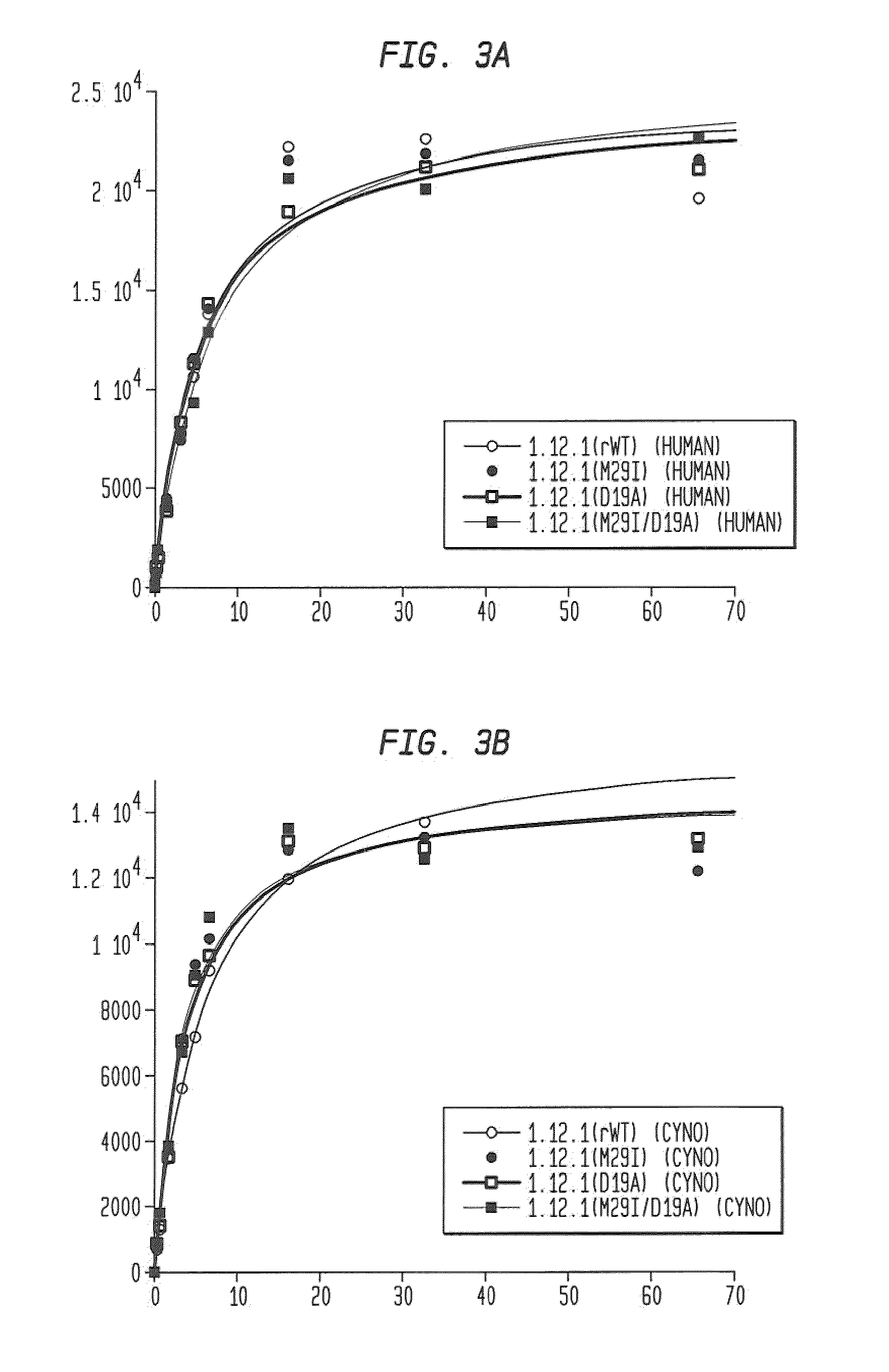Human monoclonal antibodies to activin receptor-like kinase-1
a technology of activin receptor and monoclonal antibodies, which is applied in the field of human monoclonal antibodies and antigen-binding portions, can solve the problems that no-one has demonstrated the efficacy of any monoclonal antibody
- Summary
- Abstract
- Description
- Claims
- Application Information
AI Technical Summary
Benefits of technology
Problems solved by technology
Method used
Image
Examples
example 1
ALK-1 Immunogen Preparation
[0419]The ECD of ALK-1 was cloned from full-length human ALK-1 ORF clone (Invitrogen, Clone ID IOH21048) by PCR using the forward 5′-ACGGCCCAGCCGGCCGACCCTGTGAAGCCGTCT (SEQ ID NO: 96) and reverse 5′-ACTAAGCTTTTAATGATGATGATGATGATGCTGGCCATCTGTTCCCG (SEQ ID NO: 97) primers. The PCR product was purified, treated with the SfiI and HindIII restriction enzymes, and cloned into the SfiI / HindIII site of a mammalian expression vector pSecTag2 / Hygro (Invitrogen Inc., Catalog No. V910-20). The clone was used to transiently transfect 293T cells with Fugene 6 transfection reagent (Roche Applied Science, Catalog No.1814443) following manufacture's instruction. Supernatant from the cell culture containing the secreted target protein was harvested 72 hours post-transfection and allowed to bind to Ni-NTA resin (Qiagen, Catalog No. 30430) at 4° C. overnight. The resin was then washed with buffer containing 20 mM Tris pH 8.0, 25 mM imidazole and 300 mM sodium chloride. The His...
example 2
Generation of Hybridomas Producing Anti-ALK-1 Antibody
[0423]Eight to ten week old XENOMOUSE® mice were immunized in their hind footpads with 10 μg / mouse of either recombinant human ALK-1 / Fc chimera (R&D Systems, Inc., Catalog Number 370-AL) or with the ALK-1 ECD His-Tag protein described in Example 1. This dose was repeated five to seven times over a three to five week period. Three or four days before fusion, the mice were given a final injection of the immunogen in PBS. The lymph node lymphocytes from immunized mice were fused with the non-secretory myeloma P3-X63-Ag8.653 cell line via electro cell fusion (ATCC Cat. No. CRL 1580), and these fused cells were subjected to HA-DMEM selection as previously described (DMEM / 15% FBS / 1% 200 mM L-glutamine / 1% 100× Non-essential amino acid / 1% 100× Pen / Strep / 10 U / ml IL-6 / 1 vial / liter OPI media supplement plus 0.5× HA (Azaserine-Hypoxanthine, Sigma, Cat. #A9666)). A panel of hybridomas was recovered that all secrete ALK-1 specific human IgG2 a...
example 3
Sequences of Anti-ALK-1 Antibodies
[0427]To analyze the structure of antibodies produced in accordance with the invention, nucleic acids were cloned that encode heavy and light chain fragments from hybridomas producing anti-ALK-1 monoclonal antibodies. Cloning and sequencing was accomplished by standard means.
[0428]Poly(A)+ mRNA was isolated using a Fast-Track™ kit (Invitrogen) from approximately 2×105 hybridoma cells for each of the ALK-1 antibodies. cDNA was synthesized from the mRNA by using random primers. The random primed cDNA was amplified by PCR using human VH or human VKfamily specific variable domain primers in conjunction with primers specific for the human Cγ2 constant region, or a Cκ constant region to amplify the antibody variable region including all the framework regions (FRs) and complementarity determining regions (CDRs). Nucleic acid sequences were obtained that encode human heavy and kappa light chain transcripts from the anti-ALK-1 producing hybridomas by direct ...
PUM
 Login to View More
Login to View More Abstract
Description
Claims
Application Information
 Login to View More
Login to View More - R&D
- Intellectual Property
- Life Sciences
- Materials
- Tech Scout
- Unparalleled Data Quality
- Higher Quality Content
- 60% Fewer Hallucinations
Browse by: Latest US Patents, China's latest patents, Technical Efficacy Thesaurus, Application Domain, Technology Topic, Popular Technical Reports.
© 2025 PatSnap. All rights reserved.Legal|Privacy policy|Modern Slavery Act Transparency Statement|Sitemap|About US| Contact US: help@patsnap.com



